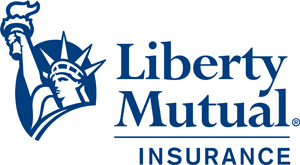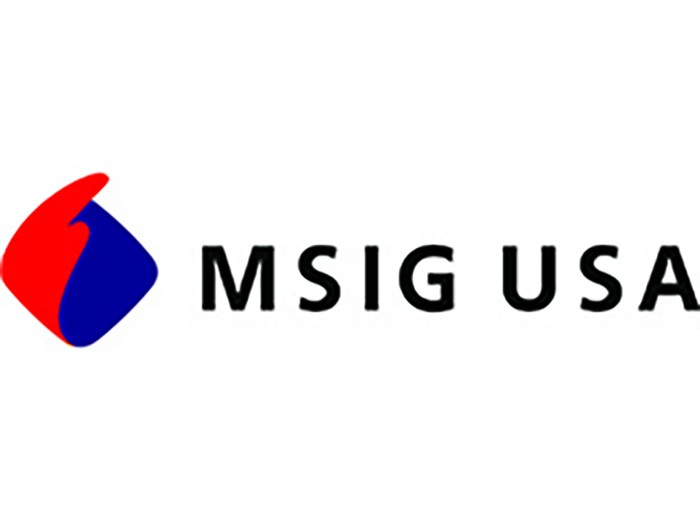Risk Scenario
A Paramount Parable
Disclaimer: The events depicted in this scenario are fictitious. Any similarity to any corporation or person, living or dead, is merely coincidental.
Home for the Holidays
Neal Chambers surveyed the holiday turkeys on display at his local grocer on Nov. 23 and mused. Fresh or frozen? Tom or hen? Free range or kosher? Locally produced or from the foothills of the Smoky or the Sierra Mountains?

Chambers threw thrift to the wind and plunked down $52 for a 16-pound organic bird from Upstate New York.
What the heck? After four brutally slow years, the construction company he managed risk for was showing signs of reemergence.
True, the company’s estimators were not happy. Where once they needed to bid 10 jobs to land one, each job now took 30 or 40 bids to land.
Neal’s company, Paramount Construction Co., based in Des Moines, Iowa, worked with larger companies historically.
But in order to land projects, it was now moving down to the middle market and competing against smaller regional operators with local expertise. This was not an easy road to hoe.
But Paramount was doing what it felt it needed to do to compete successfully.
—
At the office holiday party on Dec. 19, held at the River Bluff Country Club, Neal could see signs that the C-suites were feeling a little better about things. Nice carving station, good wine in the glasses and some generous door prizes. He took in a deep breath and let it out.
Things had been tough for a while. He’d been working hard. He’d been worried.
“Go ahead, have a drink,” he told himself. “It’s free and now is as good a time as any.”
Neal had one glass of wine in him and was waiting his turn to fill his plate at the sushi appetizer table when he saw one of the vice presidents, Tom Murphy, lift his phone to his ear.
As he listened to the caller, Murphy turned and looked at Neal. With his other hand, he gestured to Neal to join him. Murphy’s hand was free because he did not drink at company functions … ever.
“It’s Constantine,” Murphy said in a whisper when Neal got closer. “Something’s up. He tried to reach you but…”
Murphy shrugged non-judgmentally.
Constantine, head of operations. Good guy. No nonsense.
“This is Neal Chambers,” Neal said into Murphy’s phone.
“Neal, it’s Jonny Constantine. We’ve got a bit of a situation.”
“Shoot,” Neal said.
Constantine exhaled audibly into the phone. Neal could tell that Constantine was a little upset.
Neal shot a look of worry at Murphy.
“Look, we just had an accident with an excavator operator on the site here in Mille Lacs. We’ve got one seriously injured employee and some structural damage to a neighboring building.”
“How bad is the injury?” Neal said.
“It’s not pretty. I think this poor kid is going to lose his left leg below the knee,” Constantine said.
“And the building?”
“Well. The wall on the demo wasn’t supported right and the operator knocked it into this neighboring wall. It was a pretty big bump.”
Neal hung up with Constantine and gave Murphy his phone back.
As he turned his own phone on to check messages, Neal Chambers felt any holiday warmth drain out of him. The wine that had been so enjoyable 20 minutes ago now struck him like a cheap depressant.
2014 was supposed to be Paramount’s breakout year. But now Chambers had a significant workers’ compensation and general liability claim to worry about.
Looking around the brightly lit room at his fellow employees, Neal Chambers had an uneasy feeling that 2014 wasn’t going to be that great after all.
No Bench Strength
What worried Neal Chambers were the personnel cuts Paramount undertook to survive during the brutal commercial construction downturn that seized the country during the Great Recession.

The most worrisome cuts came in the area of safety, where some highly paid talent had been laid off. But there were also cuts in estimating, where other senior personnel with beefier paychecks left the company.
You couldn’t put the cart before the horse. Although things were turning around, Paramount was not yet at a place where it could hire big ticket talent to fill the gaps. Not yet.
Yet the company was trying to grow again and take on more projects. The combination worried Neal Chambers.
The accident with the excavator in Mille Lacs wasn’t catastrophic. But it was the beginning of a series of workplace accidents that plagued the company through the first six months of 2014.
Neal’s conversations with finance added to his anxiety.
“We’re just not making the money on these projects I thought we were going to be,” said Tom Murphy’s elder brother Pat Murphy, the company CFO.
Bidding for projects in unfamiliar territories and on unfamiliar scales, Paramount’s overworked estimators were missing the mark time and again.
The combination of an increased injury frequency rate and thinner margins was not making a good impression on Paramount’s surety and insurance underwriters.
Both Pat and Neal feared that year-end premium increases could be in the works.
Paramount’s revenue shortfalls created friction with subcontractors.
Jonny Constantine got into several heated arguments with subcontractors, alleging that they were botching projects by not moving more efficiently.
There were now a handful of legal proceedings underway. In those cases, Paramount was alleging that subcontractors violated the terms of their contracts by not completing the work in time, or completing it in substandard fashion.
Win or lose, those lawsuits meant one thing to Neal Chambers and Pat Murphy. They meant more costs, more margin erosion.
“We’re in a tight spot,” Neal Chambers said.
“I know we are,” Pat said, somewhat impatiently.
“The thing is, I don’t know what we can do between now and 2015 renewals to make a better impression,” Neal said.
“It’s almost like a roll of the dice,” he added. “I don’t know what else we can get out of the safety department in terms of management.”
“We need better talent and more of it,” Pat said.
The question was where.
A Horse With No Name
The answer to Neal’s question, as it turned out, was “nowhere.”

The talent crunch that Paramount was experiencing, and which was causing it so much pain, was not isolated to Paramount. But some of its competitors moved more quickly than Paramount in acquiring and retaining the talent to help them take full advantage of the upturn.
Others moved even less effectively than Paramount. But in a competitive economy, being in the middle was no place to be.
As 2014 moved from the second quarter to the third and fourth, adding to Paramount’s workers’ compensation woes and its sinking profit margins came yet another issue.
That issue was increasing commodities prices. Paramount’s overworked estimators, working in the unfamiliar middle market, failed to take into account a gradual increase in the cost of steel, copper wiring and other key construction materials.
There simply was no place to turn to hire the sort of experience in safety or in estimating that could put Paramount back on track.
As Paramount’s executives looked forward to their year-end renewals for their insurance programs, the company was looking at unpalatable premium increases.
“You’re looking at a 30 percent mark-up with your workers’ compensation premiums and at least a 25 percent increase in the amount of collateral you’re going to have to put up in workers’ compensation and in surety,” said the company’s broker, Ed Scarborough. “You’re also looking at an increase in your general liability.”
The construction market continued to recover. But Paramount now needed to play defense.
Faced with insurance and surety increases and declining margins, Paramount had no choice but to do what it didn’t want to do. Already bereft and hamstrung due to a lack of talent, Paramount undertook more layoffs.
One of the first to go was Neal Chambers.
—
In November of 2014, Neal Chambers and his daughter Annabelle went shopping for a turkey. Annabelle was fourteen and well versed in sustainable agriculture practices at school.
“We’re getting an organic turkey, right?” she asked her father.
“No, Annabelle, I’m afraid not,” Neal said.
Neal reached into the meat freezer and pulled out a frozen Honeybreast turkey and threw it into his shopping cart with a disheartening “clang.”
Risk & Insurance partnered with Liberty Mutual Insurance to produce this scenario. Below are Liberty Mutual Insurance’s recommendations on how to prevent the losses presented in the scenario. These lessons learned are not the editorial opinion of Risk & Insurance.
1. Value is replacing price: It’s no longer enough to be the lowest bidder. Contractors must now prove to clients that they have the capacity to deliver a project that is the most cost-effective in the long term. That means not only delivering a quality product, but having the risk management program and coverage in place to mitigate potential finger pointing and costly litigation down the road.
2. Keep an eye on commodities: Nowhere are the realities of the global economy more evident than in the area of commodities. Demand cycles for copper, steel, coal and other materials in developing or maturing economies are going to have an impact on prices here at home. Models that take into account commodities fluctuations will be increasingly important. In addition, any new rating programs based on Construction Value should be carefully evaluated compared to a payroll based program.
3. Talent rules: Qualified estimators and safety officers left the construction industry in droves during the downturn. Making sure the talent is in place to take advantage of the upturn in the rebounding commercial construction business is an important consideration. Don’t overlook the added value of a well-documented quality assurance program.
4. Understand new geographies: Competing in this new market may mean having to enter new geographic areas to find business. Trying to compete in New York state without understanding its Byzantine labor laws would be a mistake. So would entering into any new geography without an understanding of local regulations and how they could impact costs. Conversely, demonstrating local experience to a client would be a key selling point here.
5. Delivery methods matter: New markets mean new delivery methods. Whether it is design-build, identifying a construction manager at risk, or the complexities of public-private or international partnerships, insurance and risk mitigation are going to have to be adequate to cover these trending delivery methods. Effective communication amongst all parties including contractual relationships continues to be a vital aspect of any project.











